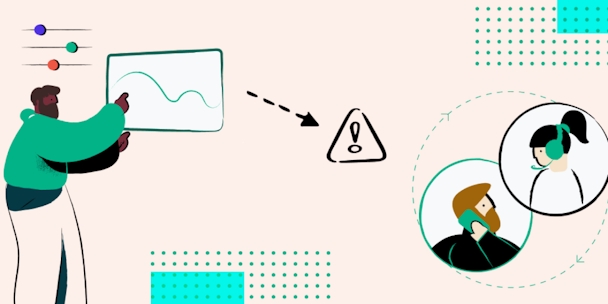How can marketers fix their broken buyer journeys in 2025?
Marketers are lost in data dead zones that don’t give them real time, end-to-end feedback on conversions and sales. Leaders from Invoca, Vanguard and Strata Homes explore where and why B2C buyer journeys falter, and how a new martech category is helping to turn the lights back on.

Breaking news: how to fix a fractured B2C journey
‘It’s all about the journey’ has never sounded truer when it comes to marketing. But “organizational fault lines” and “internal disconnects” are showing up in the customer experience, and creating friction, says Gregg Johnson, chief executive officer, Invoca.
According to Invoca research, only 28% of marketers say they are very confident that they understand their end-to-end buyer journey. And the lack of cohesion is costly. Although 90% of leaders recognize the importance of cross-functional alignment, only 10% feel they’ve achieved it – leading to data dead zones when they can least afford them.
Johnson was speaking alongside Natalie Hall, head of marketing at Strata Homes and Josh Lambert, product lead, Vanguard in a new webinar from The Drum which shares how marketers can repair their broken buying journeys, to rev up business growth in 2025.
Swerve misalignment potholes
Misaligned sales and marketing teams result in poorly coordinated planning and a lack of shared goals. Add that fracture into an already fragmented view of the offline to online buying journey and the result is a full-blown break. As Lambert says: “Clients are changing their behaviors in real time, and marketers lack the consistency to understand their full end-to-end journey.”
High stakes, high touch industries where consumers frequently dip in and out of the digital buying journey are especially at risk of these ‘data dead zones’, as Hall knows only too well. “Whether it’s a first-time home buyer or someone looking for their forever home, this isn’t an everyday decision. It’s emotional and complex,” she explains. And so, “we can’t just focus on data in black and white – we must overlay it with qualitative insights to understand the human motivations behind decisions.”
Want to go deeper? Ask The Drum
Defend your spend with a unified revenue team
Data dead zones also mean that marketers are having to work harder to optimize and defend their spend. Reuniting the online and offline customer journey and realigning marketing, sales, and contact center teams will result in more visibility and impact.
There will always be a natural tension between sales and marketing, Johnson says. But, they should be empowered “to solve strategic problems rather than wasting time pointing fingers over metrics or data quality.” Ultimately, “By having alignment around goals and metrics from both sides of the divide, you enable higher-level conversations about what is working and what needs to change,” he explains.
And a new martech category is increasingly helping to make this organizational goal a reality.
Advertisement
Make, not break – revenue execution platforms
The panel identified emerging technologies, specifically revenue execution platforms, as critical tools to solve the challenges of misaligned teams and data. These platforms enable teams to optimize marketing spend, improve lead conversion, and gain real-time insights into the buyer journey.
They “give you the ability to measure a human conversation just like a digital transaction, allowing you to design a customer journey that blends digital and human experiences,” says Johnson. And that’s invaluable in today’s data regulation-heavy environment, says Hall as she highlights how these tools align with GDPR by emphasizing first-party data: “They help us optimize campaigns by using data from actual customer interactions, improving efficiency and lead quality.”
And the benefits are endless, the panel agrees. For example, Strata Homes has been using Invoca’s revenue execution platform to leverage call data to bridge the gap between online and offline interactions. “By understanding what customers ask on calls, we can create content that guides them and make online interactions more effective,” Hall noted.
The data sharing works both ways, Lambert says: “We aim to provide our sales teams with a cheat sheet on the customer’s journey. This makes the experience seamless for the customer and builds trust.” Vanguard has attributed over 50,000 leads to this approach in the US, he noted.
Success like this is about more than aligning datapoints, says Johnson: “When you marry digital transformation with human interaction… it’s about building confidence and emotional readiness in customers.”
The road ahead for 2025
As marketers look to move beyond their fractured landscape in 2025, our panel’s final advice is clear. Combine qualitative and quantitative data to “reveal the true motivations behind customer decisions,” says Hall. And keep a relentless focus on internal collaboration and alignment, adds Lambert.
Meanwhile, with today’s economic headwinds buffeting marketers from all sides, Johnson urges marketers to focus their efforts and investment on where they can best demonstrate bottom-line impact: “In this economic environment, companies are investing where there’s high confidence in fast returns.”
To hear from insights and advice on climbing out of the data dead zone and using revenue execution platforms, watch the full webinar here.
Content created with:

Invoca
Invoca is a revenue execution platform that connects marketing and sales teams to help them track and optimize the buying journey to drive more revenue. By using...
